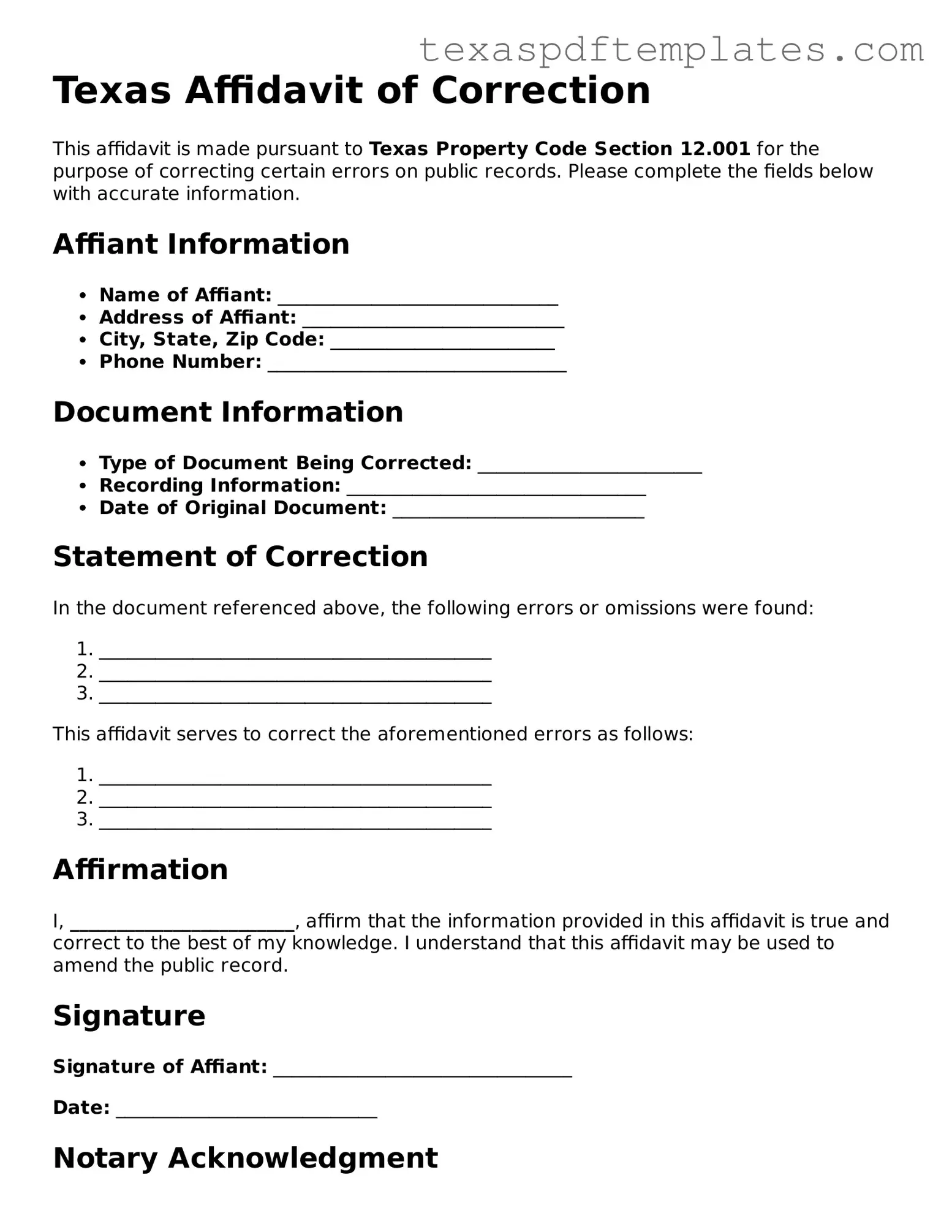Texas Affidavit of Correction
This affidavit is made pursuant to Texas Property Code Section 12.001 for the purpose of correcting certain errors on public records. Please complete the fields below with accurate information.
Affiant Information
- Name of Affiant: ______________________________
- Address of Affiant: ____________________________
- City, State, Zip Code: ________________________
- Phone Number: ________________________________
Document Information
- Type of Document Being Corrected: ________________________
- Recording Information: ________________________________
- Date of Original Document: ___________________________
Statement of Correction
In the document referenced above, the following errors or omissions were found:
- __________________________________________
- __________________________________________
- __________________________________________
This affidavit serves to correct the aforementioned errors as follows:
- __________________________________________
- __________________________________________
- __________________________________________
Affirmation
I, ________________________, affirm that the information provided in this affidavit is true and correct to the best of my knowledge. I understand that this affidavit may be used to amend the public record.
Signature
Signature of Affiant: ________________________________
Date: ____________________________
Notary Acknowledgment
State of Texas
County of _______________________
Subscribed and sworn to before me on this _____ day of __________, 20__.
_____________________________
Notary Public
My Commission Expires: __________
